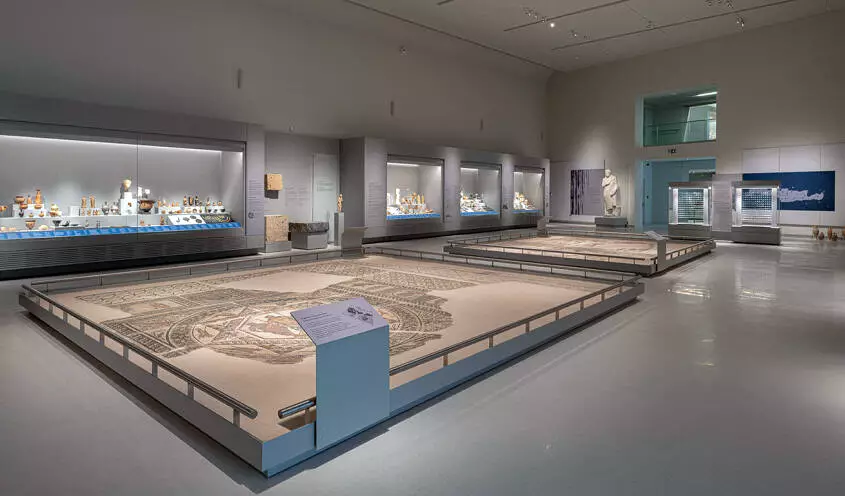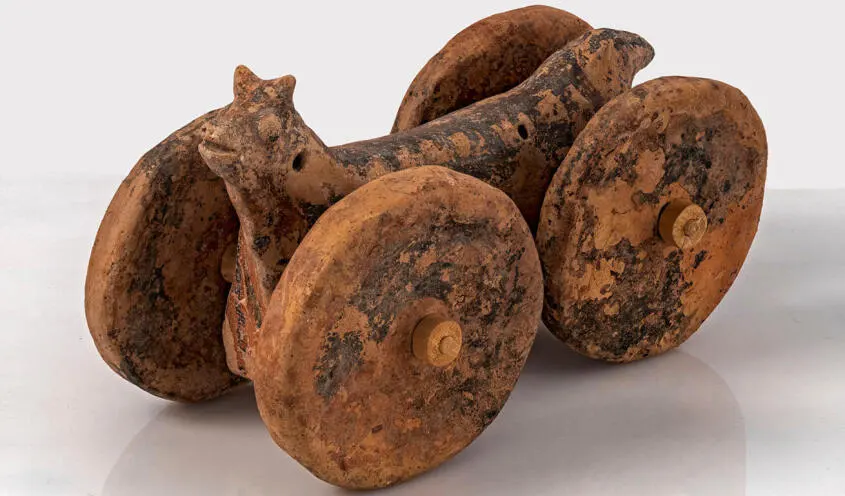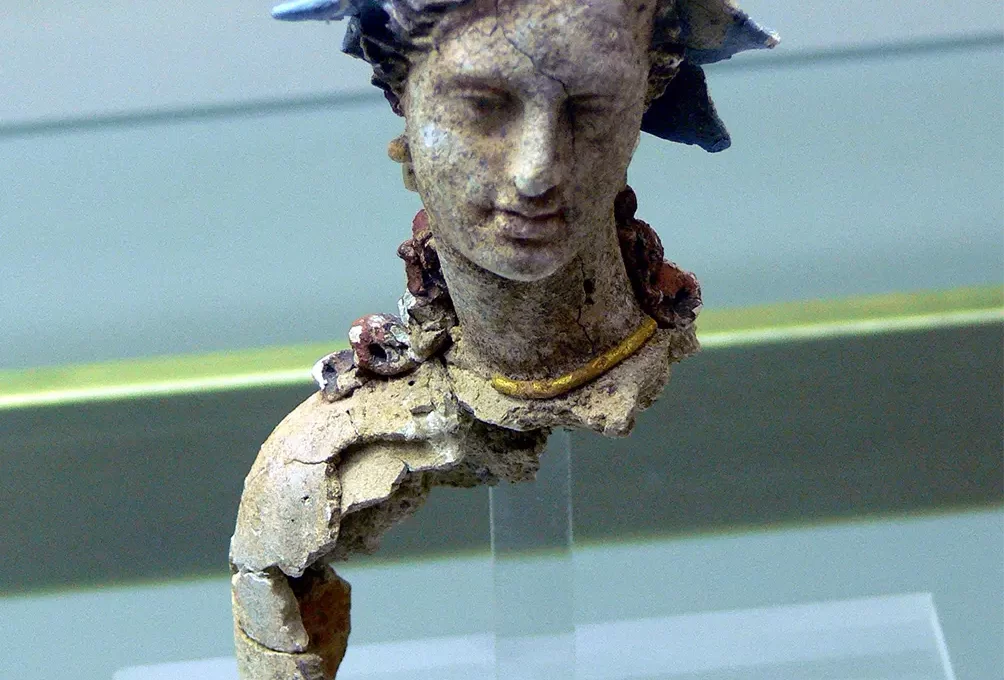If you love Crete for its rich history and admire Chania for is ancient treasures, then you cannot miss the new Archaeological Museum. Previously located in the former Venetian Monastery of Saint Francis at Chalidon Street, the Archaeological Museum of Chania closed for the public in 2020, as its rich collection was relocated to the new building and enriched with hundreds of new exhibits.
Table of Contents
Chania Archaeological Museum: An Iconic Architectural Building
Since April 2022, the new Archaeological Museum of Chania is located in Chalepa, the most important historic district of Chania after the Venetian urban core. This remarkable architectural structure is sited on a plot of land covering more than 12 acres, with a total area of space measuring approximately 6.000 sq.m.
The Museum, designed by architect Theofanis Bobotis and partners, and its architectural shape is the appropriate answer to the building’s function and the exceptional position of its exhibits. The structure provides astonishing views over the city of Chania and the Aegean Sea and is served as one of the most iconic landmarks in Chania, Crete.


The new Archaeological Museum of Chania represents the conception of architecture which is constantly moving in the field of interaction between buildings and their users. Moreover, the consistent interaction between the building and its environment is conceived as a quality, as is a functional and practical utilisable space
Chania Archaeological Museum’s Permanent Exhibition
The permanent exhibition of the new Archaeological Museum of Chania is set out in three gallery halls on the ground floor and one on the upper floor of the building. In the first gallery, the narrative opens with the earliest human presence in Chania, continuing with the presentation of prehistoric settlement life. Ancient objects and reconstructions associated with public and private life reveal the splendour of the Minoan past of West Crete, the coming of the Mycenaeans from Peloponnesus, and highlight the importance of the impressive palatial center of Kydonia (Chania City) through the course of time.
In the second gallery, the exhibition continues into historical times and the establishment of the city-states of West Crete, notably Kydonia, Aptera and the League of cities established in the 3rd c. BC, known as the of the Oreioi. Emphasis is placed on productive activities, alliances, coinage and also the commerce with East and West, which is explored in a special video presentation.
In the third galley, aspects of everyday life in historical times unfold through a multitude of artifacts and the reconstruction of a house that was destroyed in the great earthquake of 365 AD. Sanctuaries and religious customs, the Asklepieion of Lissos, funerary practices, and representative examples of sculpture and funerary monuments complete the narrative of the life of the people of West Crete up to the 4th c. AD. Special video presentations highlight the important Asklepieion of Lissos, with its unique group of marble statues, and the destruction of the “Miser’s” House. Two tables with tactile exhibits and braille captions enrich the exhibition.
Treasures & Artifacts of Exceptional Beauty
Few cultures have left behind as many immediately recognizable objects and buildings as ancient Greece. The exceptional beauty of Crete’s ancient palaces, tombs, and objects draws thousands of people each year to Crete, and to museums around the world. Treasures of the Minoan Era tells the tale of many of these familiar places and riches—alongside many that are less familiar, but just as spectacular—framed by a lively and highly readable account of Crete’s history.
The Archaeological Museum of Chania is renowned for the quality and breadth of its collection. Over 3500 objects are on show; coins, jewelry, vases, sculpture, clay tablets with inscriptions, stelae and mosaics.



USEFUL INFORMATION
Before your visit see the following information:
Dates and opening hours:
The majority of museums and collections are closed on Tuesdays. In the winter season (November – March) the opening hours are from 08:30 – 15:30 (09:00 – 16:00 for the major ones) and are extended during the summer ( April – October ). The last admission is 20΄ before closing time. Adjustments or changes to the opening hours and days are announced on the Ministry of Culture and Sports website ( https://www.culture.gov.gr/en/service/SitePages/view.aspx?iiD=2710 ). For further information and confirmation please call the Museum before your visit.
Museums are closed on the following holidays:
1 January, 25 March, Greek Orthodox Easter Sunday, 1 May, 25 & 26 December
Museums are open on the following holidays:
6 January, Clean Monday, Greek Orthodox Easter Monday, Holy Spirit Monday, 15 August, 28 October.
On Good Friday and Saturday, the opening hours diversify. For further information and confirmation please call or visit the museum’s website.
Admission fee:
Valid tickets (full and reduced) are needed for admission. In some cases, there is a special ticket package for museums and archaeological sites within the same area. From the 1st of November till 31st of March a reduced rate for single-use tickets is valid for all visitors.
Free of charge for all visitors (without fee payment), on the following dates:
6 March (in memory of Melina Mercouri), 18 April (International Monuments Day), 18 May (International Museums Day), the last weekend of September annually (European Heritage Days), 28 October (National Holiday), and every first Sunday of each month from November 1st until March 31st
For information about free and reduced admission to Greek State Museums please press here: https://www.culture.gov.gr/en/service/SitePages/view.aspx?iID=2695






